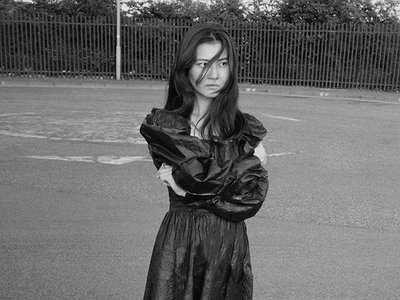Part 1
Name: Galya Bisengalieva
Nationality: Kazakh/British
Occupation: Violin performer/ composer
Current Release: Aralkum on One Little Independent Records
Recommendations: A deep dive into the works of Agnes Martin / Kitchen by Banana Yoshimoto
Website/contact: Galya has a website galyabisengalieva.com where you can watch live performances and keep up to date with releases and recordings.
When did you start writing/producing music - and what or who were your early passions and influences? What is it about music and/or sound that drew you to it?
I vividly remember learning songs by ear and being inspired by my grandmother’s singing. She had an incredibly beautiful and pure voice and used to sing a lot of traditional Kazakh folk songs. I then started playing the violin at an early age, trying to learn the craft of the instrument, although I was trying to always experiment, be it with phrasing or interpretation of a piece and found joy in improvising, from that point it’s a short leap to composition. I’m glad it happened organically. I love that I can apply that early inquisitiveness in my violin performance to my compositional practice.
For most artists, originality is first preceded by a phase of learning and, often, emulating others. How would you describe your own development as an artist and the transition towards your own voice? What is the relationship between copying, learning and your own creativity?
My phase of learning was long and tough! Soviet training on the violin, then getting a scholarship to the Royal Academy of Music. It was very academic and strict. My voice developed from rebelling against a lot of what I was taught. As I was a performer before being a composer it was originally my job to interpret other people’s music. I have essentially been a music sponge for a long time and through osmosis have been inspired by a lot of music.
What were your main compositional- and production-challenges in the beginning and how have they changed over time?
In the beginning the technology just wasn’t available to me. It was me and my violin, it’s a real strength to be incredibly creative with just one instrument as a foundation. When you get into the world of electronics and start producing on Logic and Ableton a whole world opens up, but as part of my practice I still limit my palette from track to track.
What was your first studio like? How and for what reasons has your set-up evolved over the years and what are currently some of the most important pieces of gear for you?
I guess my first studio was just my bedroom with a violin and a piano. I still keep things incredibly simple now; a couple of beautiful Soyuz mics, RME interface, guitar pedals and a computer. I’m not really gear driven. I do have a few folk instruments now that I use in my compositions and quirky percussive toys like a Soviet doll with bells inside it that I sampled into my latest album recently.
How do you make use of technology? In terms of the feedback mechanism between technology and creativity, what do humans excel at, what do machines excel at?
The human element really is most important to me, I use technology to simplify my life. In terms of electronics, it’s what sounds musical and interesting to the ear, like you’d approach an instrument. Pretty much all of my music starts with an acoustic source, I use electronics to push into territory that I just can’t get into through natural means.
Production tools, from instruments to complex software environments, contribute to the compositional process. How does this manifest itself in your work? Can you describe the co-authorship between yourself and your tools?
My set up probably wouldn’t work for most people but it’s fine for me. I keep it so simple, use field recordings, manipulate violin sounds. When you spend your childhood going down such a rabbit hole on one instrument the possibilities really do seem endless with a small amount of inputs. I love watching somebody like Suzanne Ciani who just uses the one Buchla, be it 200 or 200e synth, but knows it so intimately.
Collaborations can take on many forms. What role do they play in your approach and what are your preferred ways of engaging with other creatives through, for example, file sharing, jamming or just talking about ideas?
I love collaborating, sharing ideas and growing. Each collaboration is always unique, because we are all different from one another. I love the workshopping process and learning and introducing new sounds. My most recent collaboration was with Moor Mother. We inhabit totally different sound worlds but were able to find common ground and make something really unique and special.
Combining art forms also makes me extremely happy, with artists, film directors and photographers. I set up the NOMAD record label in 2018 to give a voice to music that inhabits an electro acoustic space. Every release has been collaborative and incredibly enjoyable.





